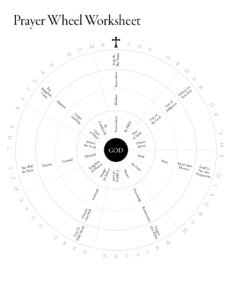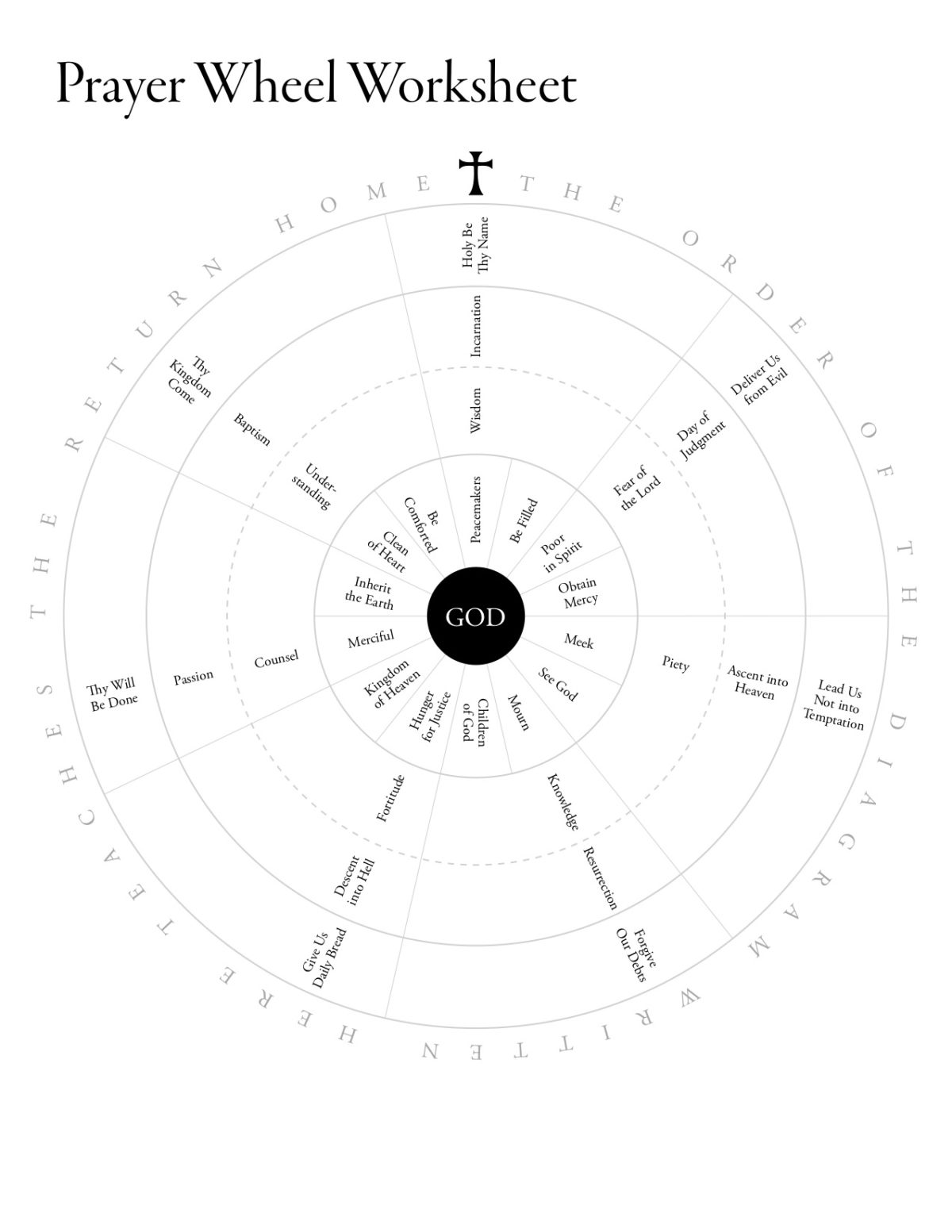 At Mormon Matters we will occasionally focus on the importance of sticking with (though often with changed forms) spiritual practices even while in the midst of shifting faith. Even when we might not be sure what we believe anymore, putting ourselves in some way in a position to stay connected with God (whoever or whatever that is, some would add) and our highest selves and desires is vital to our remaining in balance and not letting our minds and doubts completely run the show.
At Mormon Matters we will occasionally focus on the importance of sticking with (though often with changed forms) spiritual practices even while in the midst of shifting faith. Even when we might not be sure what we believe anymore, putting ourselves in some way in a position to stay connected with God (whoever or whatever that is, some would add) and our highest selves and desires is vital to our remaining in balance and not letting our minds and doubts completely run the show.
In that spirit, we present this show and the introduction it gives to a recently discovered (at least for a general audience) practice from early and medieval Christianity that has surprising relevance for today’s world and how we access information and get ideas for how we might live. (Hence the words in the subtitle to the episode, which comes from the introduction to the book about the practice we discuss herein.) Earlier this year, the book The Prayer Wheel: A Daily Guide to Renewing Your Faith with a Rediscovered Spiritual Practice was published (Convergent Books). Written by three friends—Jana Riess (who is well known to and beloved by the Mormon Matters audience), Patton Dodd, and David Van Biema—the book chronicles the discovery of a diagram that was bound into a thousand-year-old book containing the four Gospels. As the authors researched it and discovered similar (but less awesome–of course!) diagrams, they realized they had stumbled upon a prayer technology used within Christianity during the medieval period (and likely longer), but which had lost its relevance sometime following the invention of the printing press. Now it is being re-presented here at this very time when some say we are at the end of the printing press era, and it bears similarities to how we use apps and various digital and smartphone technologies today. It’s a fascinating story and both it and the prayer wheel itself hold many interesting things to think about.
But most importantly, the wheel also a powerful tool for devotional prayer and assisting us in drawing closer to God and our own centers. We won’t describe it here (the image accompanying this write-up on the Mormon Matters website shows the wheel with English translations of what was originally Latin), but we will say that for Mormon audiences, who typically stay away from fixed or rote prayers, this wheel (and the book’s and this podcast’s presentation of ways to use it) highlights a practice that is somewhere in-between fixed and freestyle praying. It is quite intriguing for anyone who is trying to deepen her or his devotional life through a contemplative practice. Within the conversation here, we also discuss other connections Mormons might make between it and early and present-day Christianity and Judaism.
We think you’ll find the discussion in this episode delightful in its mix of personal journeying, intellectual fascination, and how the wheel has enhanced the authors’ own faith lives. This will be a show that afterward you will likely say, “Wow, before I began listening, I had no clue that I’d be as interested in this topic as I am now!”
Link to download a larger version of the prayer wheel (pictured above)
__________
Additional Links:
Patton Dodd, Jana Riess, and David Van Biema, The Prayer Wheel: A Daily Guide to Renewing Your Faith with a Rediscovered Spiritual Practice (New York: Convergent Books, 2018).
Click here to go to The Prayer Wheel book website
Jana Riess, Flunking Sainthood: A Year of Breaking the Sabbath, Forgetting to Pray, and Still Loving My Neighbor (Paraclete Press, 2011)
Patton Dodd, My Faith So Far: A Story of Conversion and Confusion (Josey-Bass, 2004)


Comments 3
I am in Florence right now. Last night I downloaded the prayer wheel, and today I went to the Duomo. The dome is strikingly like the wheel. Apparently you ‘read ‘ the dome from the inside/top (the light of god), on out/down, moving from angels to good gifts to bad stuff. Seeing the two so close in time made me wonder if people who used the wheel also had experience with this kind of cathedral dome. If so, it might explain why someone thought to pull the ends of Augustine’s chart together. I think familiarity with dome architecture would make the prayer wheel more viscerally meaningful. One notable difference between the two — the wheel has seven paths; the dome has eight sides. According to our guide the number eight is significant for a number of reasons. One is that it represents the eight day — which doesn’t exist on the calendar. The eight day is the day of resurrection. And on the dome one side has a painting of Christ with arms outstretched. It makes sense that the wheel only has seven if we’re all working our way to God. I also thought that perhaps it would make sense to pray one path each day of he week? Then perhaps we are ready for the eight day.
One other thought — I wonder about eras/schools of thought re the role of people in choosing their own destiny. The prayer wheel suggests quite a bit of agency. Did that ebb and flow? Or was it more pronounced in some places/groups than others?
Hi, LCH. Lucky you to be in Flrorence and at the Duomo! I hadn’t known that it had its own dynamic from center to perimeter. I think it’s quite likely that there’s a relationship between that and the shape and flow of the Prayer Wheel, but in the reverse order. The great domed Gothic cathedrals, starting with the one at Saint-Denis, were ornaments of the mid-12th century and forwards, partly because the builders had not redeveloped the necessary architectural tools. We’ve estimated that the Wheel was drafted in the 11th century, and our version probably at around 1100. But without having done a study on it, I think that the fascination with circles and prayerfully meditative voyages within them expressed so beautifully in the Wheel continued to flower in the great Christian architectural monuments like the Duomo. Both took the believer’s heart on a geometric pilgrimages, inspired by actual physical pilgrimages to relics and the Holy Land that were even earlier. A big concept among Benedictine monastic thinkers at the time of the Wheel and a little before was one of going out and coming back, which you can actually find spelled out in the Lord of the Rings books by Tolkien, who was… a medievalist. Neither the Wheel as we recreated it nor the Duomo as it was described to you involve both parts of this journey, although if you put them together they would! FYI, two other architectural expressions of Whee-like geometricl spirituality contemporary with the Duomo were the rose window and the great maze in the foundation of the Chartres Cathedral.
Regarding your question about agency, I think you’re right that it ebbs and flows. Also that it can flow in one way while being pretty static in another. Lauren Mancia, a historian at Brooklyn College who was very helpful to us with the book, told us that the idea of different contemplative paths to God was typical of Benedictine thought. However, on a kind of macro level, my impression is that the big theological questions were more or less set in stone from the 500s through to the mid 1000s at the earliest, without much room for individual agency. When the big plates finally did begin to move partly in response to the rediscovery of Aristotelian thought and a new desire for a more emotional spirituality, the Church became very concerned with figuring out which of the new ideas it regarded as valid and which were heresies. That was a period of agency with possible consequences. Then with the Reformation you see the dawn of individual agency as a founding principle, insofar as everyone was supposed to have his or her personal relationship with scripture; but the Reformers, especially Calvin, didn’t believe that humans had any agency at all vis a vis God and the life to come. Ebbing and flowing, indeed. Best, David. And thanks you for your fascinating observations and questions!
Cool. Thanks!